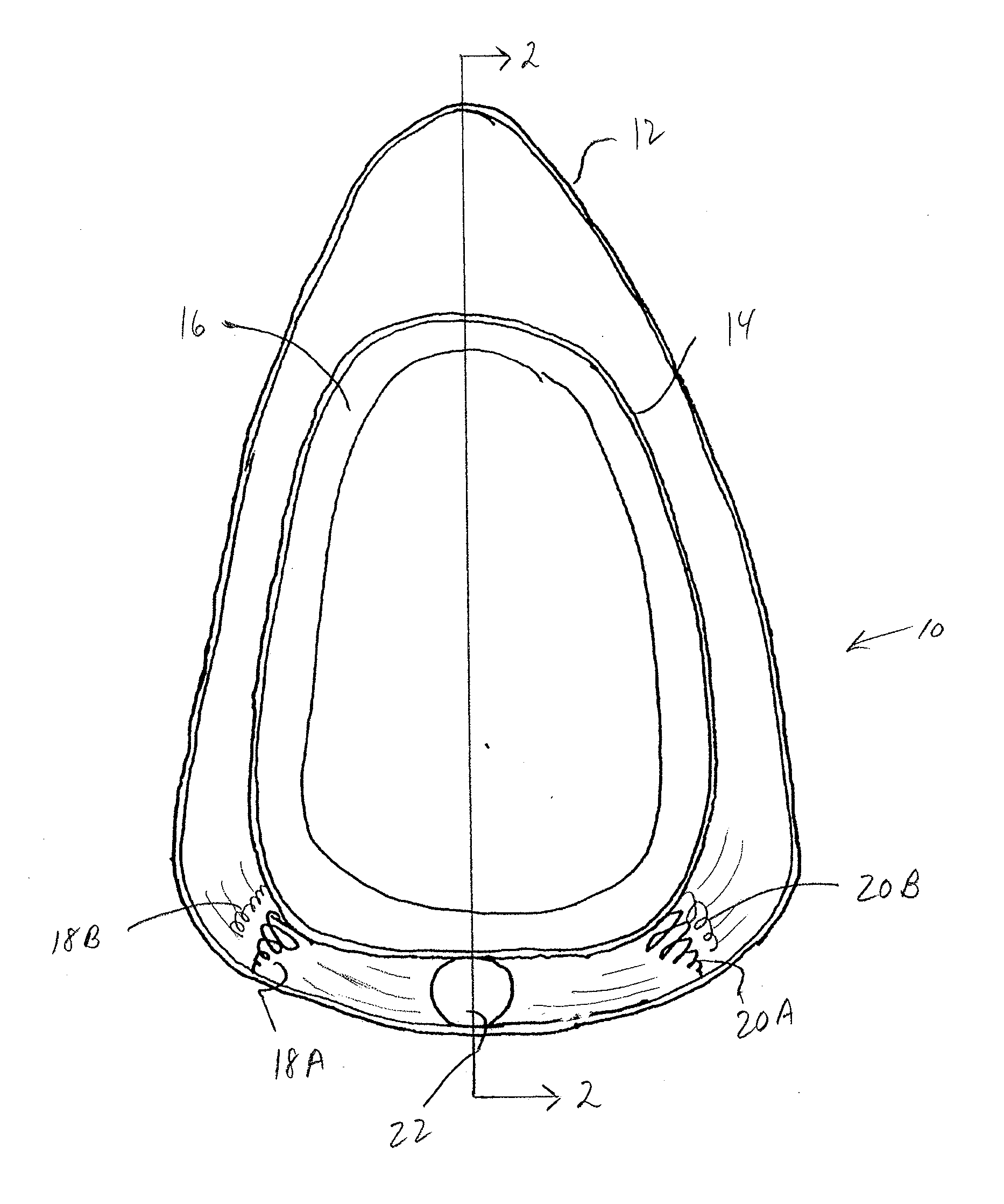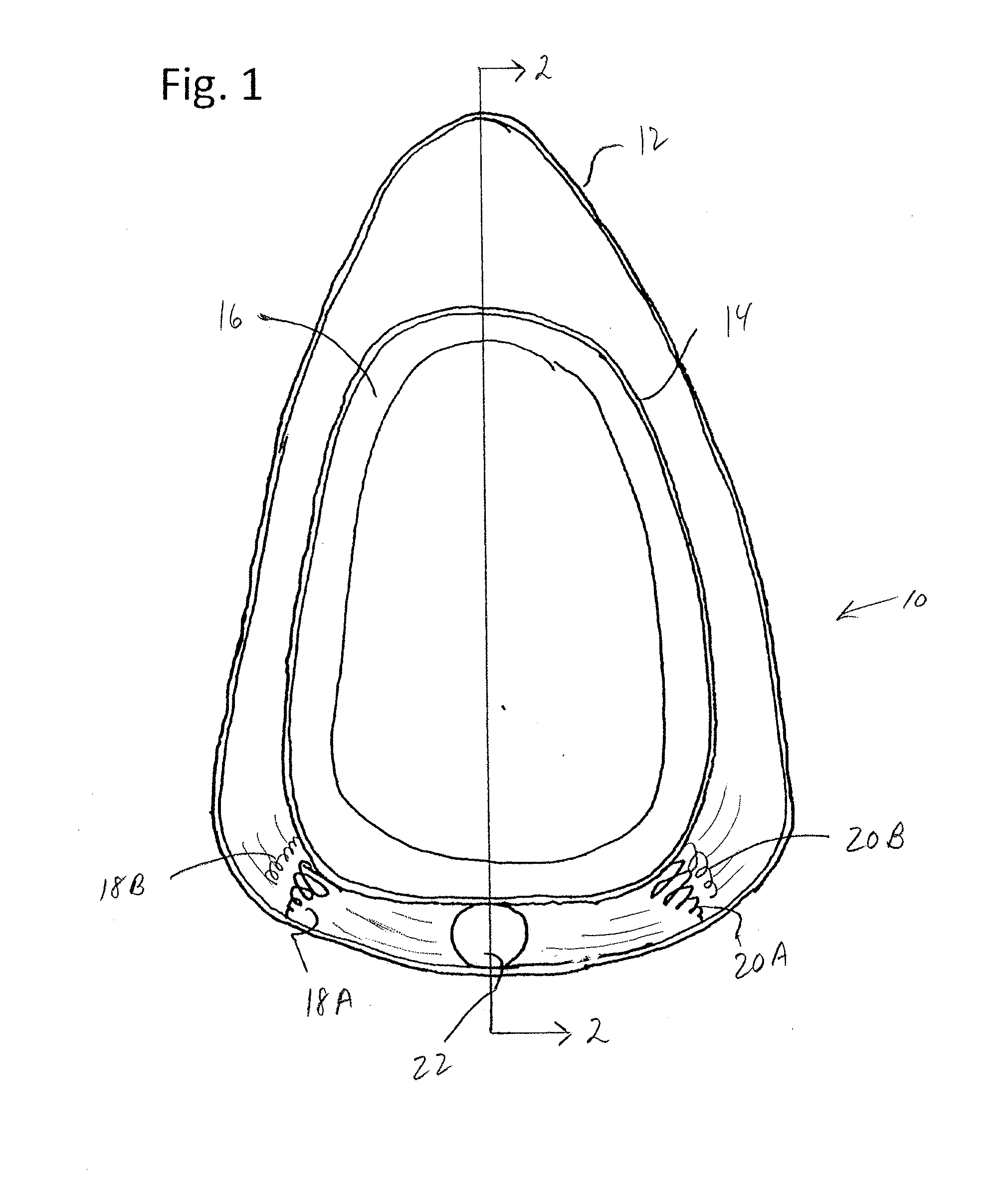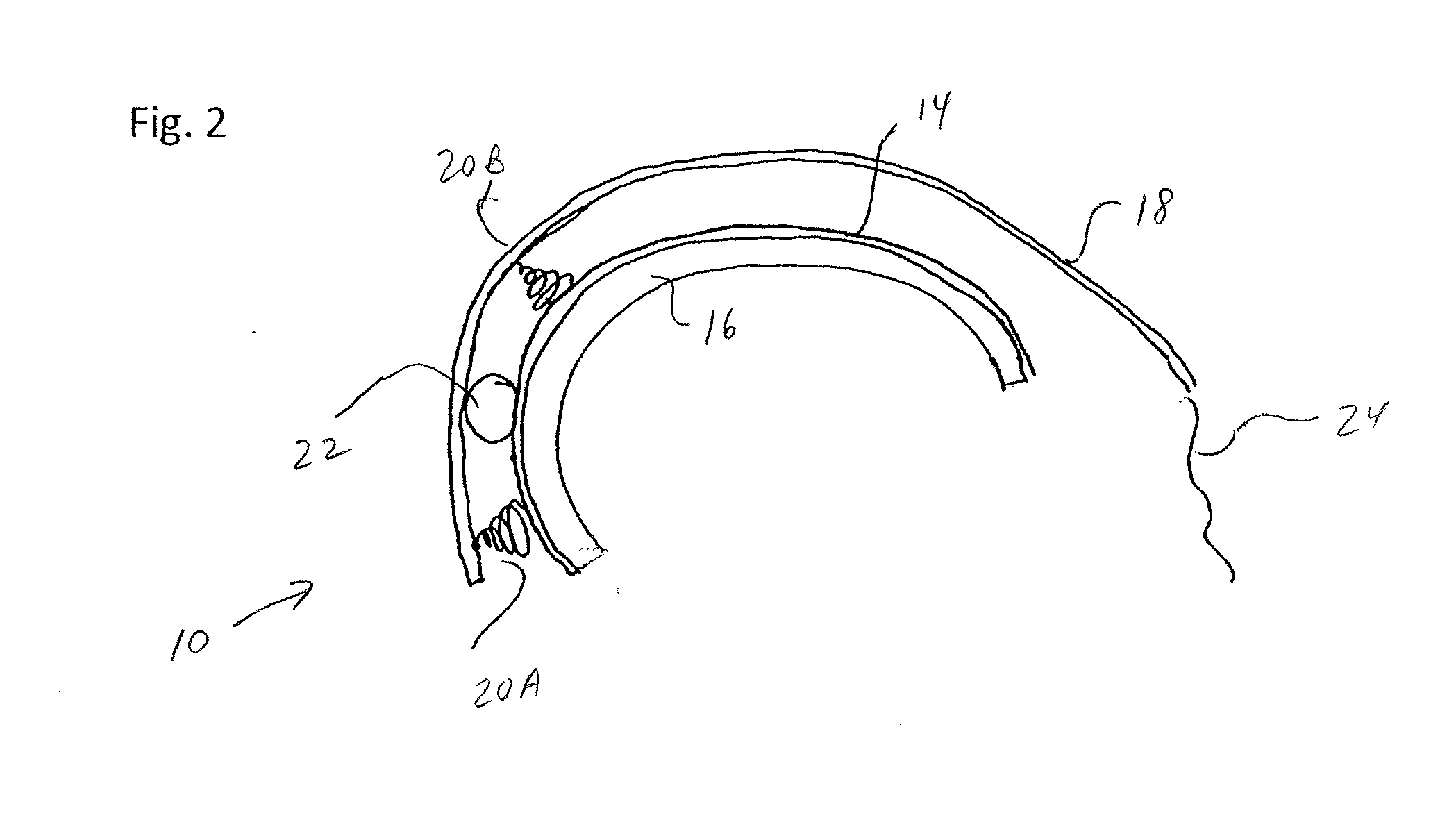Energy Dissipation System For A Helmet
- Summary
- Abstract
- Description
- Claims
- Application Information
AI Technical Summary
Benefits of technology
Problems solved by technology
Method used
Image
Examples
Embodiment Construction
[0019]In describing a preferred embodiment of the invention illustrated in the drawings, specific terminology will be resorted to for the sake of clarity. However, the invention is not intended to be limited to the specific terms so selected, and it is to be understood that each specific term includes all technical equivalents which operate in a similar manner to accomplish a similar purpose.
[0020]With reference to the drawings, in general, and to FIGS. 1 through 3, in particular, an energy dissipation system embodying the teachings of the subject invention is generally designated as 10. With reference to its orientation in FIG. 1, the energy dissipation system includes a rigid outer shell 12 and a rigid inner shell 14. Included within an inner layer of the inner shell is padding material 16.
[0021]A series of springs or dampers interconnect the inner shell and the outer shell. As shown in FIG. 1, springs or dampers 18A, 18B are shown on one side of a space between the inner and oute...
PUM
 Login to View More
Login to View More Abstract
Description
Claims
Application Information
 Login to View More
Login to View More - R&D
- Intellectual Property
- Life Sciences
- Materials
- Tech Scout
- Unparalleled Data Quality
- Higher Quality Content
- 60% Fewer Hallucinations
Browse by: Latest US Patents, China's latest patents, Technical Efficacy Thesaurus, Application Domain, Technology Topic, Popular Technical Reports.
© 2025 PatSnap. All rights reserved.Legal|Privacy policy|Modern Slavery Act Transparency Statement|Sitemap|About US| Contact US: help@patsnap.com



